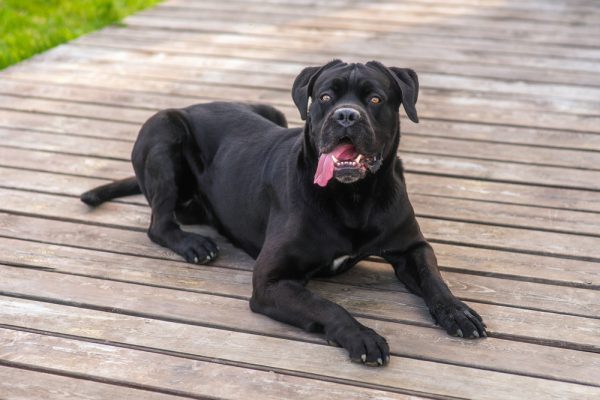Many owners may not realize it, but dog poop can provide valuable insights into their pets’ health. In fact, by understanding what normal dog poop looks like and why it’s crucial to regularly check it, you can better monitor your pup’s overall health and well-being.

What Does Normal Dog Poop Look Like?
Normal dog poop is typically firm, moist, and chocolate brown in color. It should hold its shape and be easy to pick up. When you check your dog’s poop, you can assess their digestive health. Any deviations from the normal appearance could indicate issues like diarrhea, constipation, or gastrointestinal upset.
Get Familiar With the Canine Poop Scale

Veterinarians use a fecal scoring system (a.k.a. the “poop scale”) to assess the health of dog feces.1 This scale ranges from 1 to 7, and here’s what each number means.
| Scale | Poop Texture and Color |
| 1 | Very hard and dry, looking like small pellets |
| 2 | Firm but not hard; segmented appearance |
| 3 | Chocolate brown-colored logs; easy to pick up and slightly squishable |
| 4 | Chocolate, gray, or tan-colored logs with slimy coating |
| 5 | Very moist, slimy logs that fall apart when picked up and leave a residue |
| 6 | Shapeless plops of poop often dropped in multiple locations |
| 7 | Watery, no texture, reddish brown or tan-colored puddle |
This system helps veterinarians quickly assess any potential health issues based on the appearance and consistency of the dog’s poop.

The 7 Reasons You Should Always Look at Your Dog’s Poop
1. It’s an Indicator of Their Digestive Health
Regularly inspecting your dog’s stool can help you catch digestive issues early. Changes in poop consistency, color, or odor may signal underlying problems like dietary intolerances.

2. It’s an Early Detector of Health Problems
A change in your dog’s poop can be an early warning sign of other underlying health problems, such as infections. Early detection allows for prompt veterinary intervention and better outcomes for your pet.
3. You Can Monitor Your Dog’s Diet and Nutrition
Your dog’s diet has a significant role in their overall health and the quality of their poop. By examining their stool, you can evaluate how well their current meals are being digested and absorbed. Changes in poop consistency or color may indicate the need for dietary adjustments or the presence of food allergies.

4. You Can Identify Potential Parasites
Parasites like worms can wreak havoc on your dog’s health if left untreated. By examining their poop for signs of worms or their eggs, you can promptly address any infestations. Intestinal parasites are not only harmful to your dog but can also pose a risk to other pets and even humans in the household.
5. You Can Monitor Your Dog’s Hydration Levels
The moisture content of your dog’s poop can provide insights into their hydration status. Normal dog poop should have a bit of moisture but not be excessively wet or dry. Changes in hydration levels can affect the consistency of their stool, with dehydration leading to hard, dry poop and excessive water intake resulting in loose, watery stool.

6. It Provides Environmental and Behavioral Insights
Examining your dog’s poop can provide valuable insights into their environment and behavior. For example, if you notice foreign objects or undigested food in their stool, it may indicate that they’re ingesting non-food items or eating too quickly. Additionally, changes in poop frequency or location could be linked to stress or changes in routine.
7. You Can Evaluate Medication Effects
If your dog is on medication, changes in their poop could be a side effect of the drugs that they’re taking. Certain medications may cause alterations in feces color, consistency, or odor. By closely monitoring their stool, you can discuss any concerns with your veterinarian and adjust the treatment plan if necessary.
If you need to speak with a vet but can't get to one, head over to PangoVet. It's our online service where you can talk to a vet online and get the advice you need for your pet — all at an affordable price!

Conclusion
Paying attention to your dog’s poop is an essential part of responsible pet ownership. By knowing what normal dog feces looks like and regularly checking it, you can proactively monitor your pet’s health and well-being. From digestive health to hydration levels and beyond, your dog’s stool can be incredibly informative if you’re willing to take a closer look.
So, next time you’re out for a walk with your furry companion, don’t forget to glance at their poop—it could save you both trouble later.
Related read:
- Yellow Dog Poop: Meaning and When to Worry
- Why is My Dog Pooping More After Changing Food? (Vet Answer)
Featured Image Credit: Dora Zett, Shutterstock


















